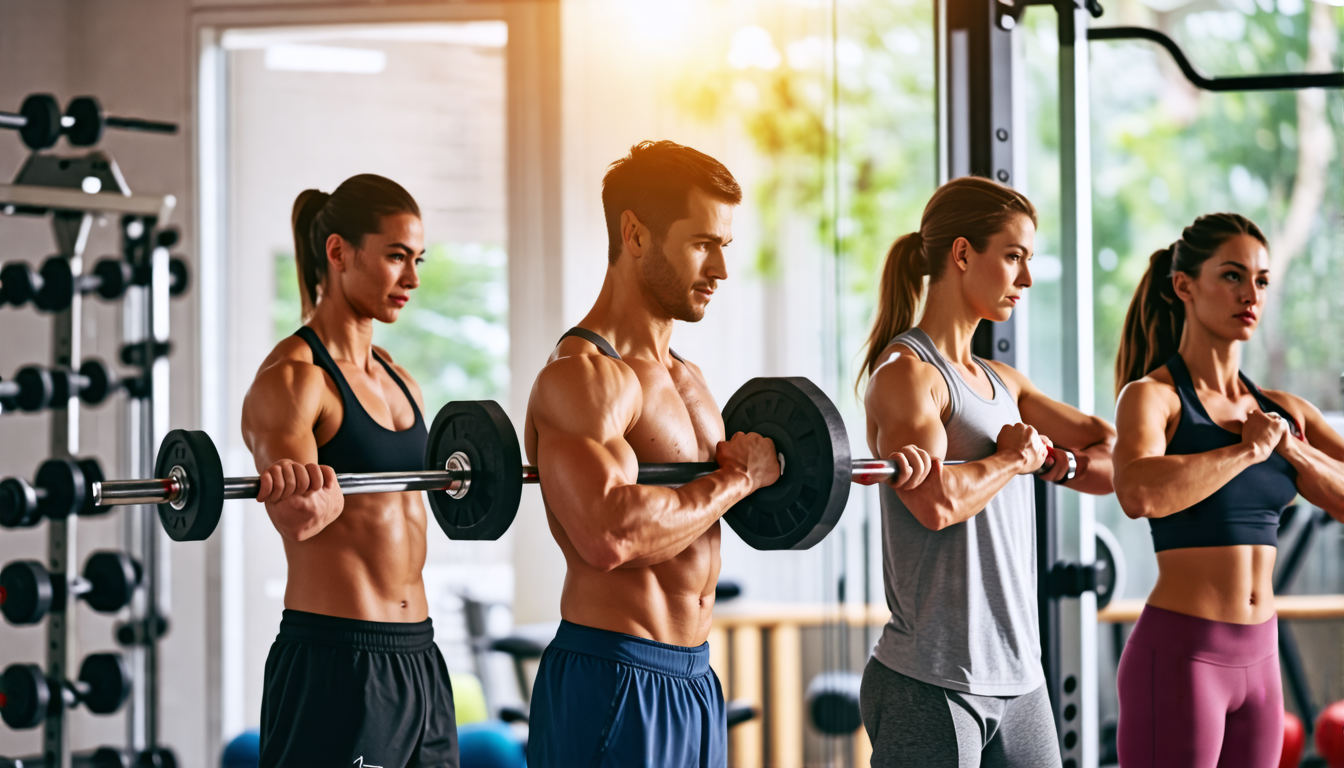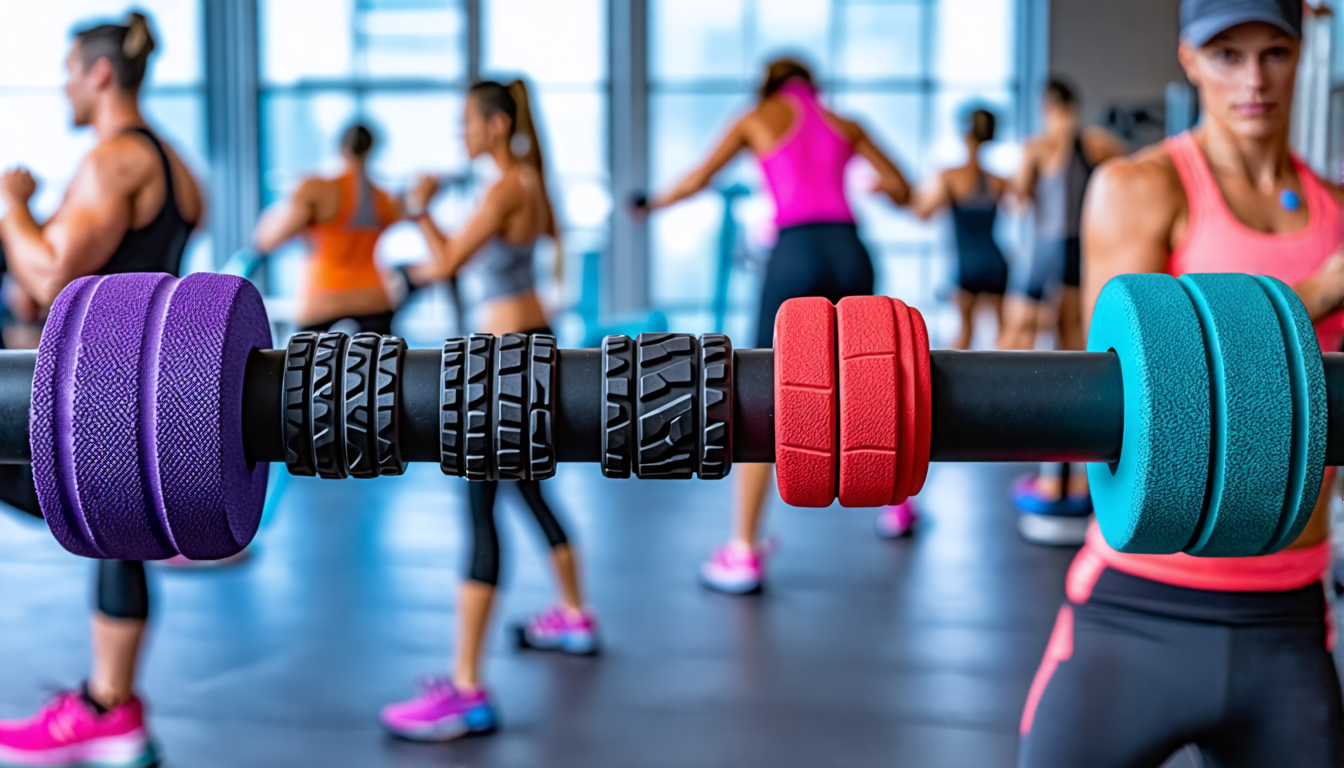When it comes to maximizing the effectiveness of your home fitness bar workouts, understanding the nuances of specialized grips can make all the difference. As more fitness enthusiasts embrace the convenience of home workouts, investing in a versatile fitness bar becomes increasingly popular. But to truly harness its potential, one must delve into the art of grip variation. Grips like the overhand, underhand, and neutral not only cater to specific exercises such as pull-ups, chin-ups, and rows, but also serve to target distinct muscle groups, providing a comprehensive and efficient workout experience.
The ability to switch between these grips isn’t solely about variety; it’s about aligning your workout with your personal fitness goals while ensuring safety and effectiveness. Whether you’re a beginner looking to build foundational strength or an advanced athlete aiming for muscle definition, selecting the right grip is crucial. Proper grip technique not only enhances performance but also minimizes the risk of injury. Accessories like grip pads or gloves can significantly improve grip stability, allowing you to maintain correct form even during the most rigorous routines. As such, understanding and incorporating specialized grips into your home fitness bar exercises can elevate your regimen, ensuring you achieve optimal results from the comfort of your own space.
Understanding Specialized Fitness Bar Grips for Various Exercises
Maximizing the effectiveness of your home fitness bar workouts involves more than just lifting and pulling; it’s about how you engage your body through different grips. By consciously altering your grip, you can target specific muscle groups, which not only optimizes workout efficiency but also diversifies your exercise routine to foster balanced muscle development. Whether you have a pull-up bar installed at home or a multifunctional fitness bar setup, the choice of grip can significantly influence your training outcome.
The Importance of Grip Variation
The grip you choose plays a crucial role in how your muscles are engaged. For instance, shifting from an overhand grip to an underhand grip during pull-ups transforms the primary muscle focus from your back to your biceps. By understanding these dynamics, you can tailor your home gym session to better align with your fitness goals, whether it’s building strength, enhancing endurance, or increasing muscle size. Such variations are particularly beneficial for those who utilize their home fitness bar regularly, as they can prevent muscle adaptation by continually challenging your body.
Commonly Used Grips and Their Applications
-
Overhand Grip (Pronated)
The overhand grip, where palms face away from you, is widely used in exercises such as pull-ups and rows. This grip primarily targets the upper and mid-back muscles, along with secondary engagement of the shoulders and forearms. In a home fitness setting, integrating the overhand grip can strengthen the upper body while also providing a solid foundation for more complex movements.
-
Underhand Grip (Supinated)
With the underhand grip, palms face towards you, effectively shifting emphasis to the biceps and the lower latissimus dorsi. Commonly used in chin-ups, this grip allows for a greater range of motion and is often considered easier than the overhand grip, making it ideal for beginners working on their home bars. Additionally, this grip is excellent for those focussing on arm definition and strength.
-
Neutral Grip
The neutral grip, where palms face each other, is typically employed in exercises like neutral-grip pull-ups or dumbbell rows. It provides a balanced engagement of the biceps and back, reducing strain on the shoulders. This grip is particularly beneficial for maintaining wrist comfort and minimizing stress on elbow joints, making it a preferred option for people with joint issues or those looking for a safer alternative in their home workouts.
Enhanced Workout Efficiency with Grip Variations
Incorporating different grips is vital for achieving comprehensive fitness results with your fitness bar. By cyclically rotating through these grip variations, you can encourage muscle confusion, preventing plateaus and ensuring consistent strength gains. Whether you aim to enhance specific muscle groups or improve overall upper body strength, grip variation on your home fitness bar can lead to remarkable progress.
Understanding how each grip works, and the muscle groups it targets can help you devise a balanced workout routine, ensuring that all areas of the upper body are developed proportionately. For instance, alternating between overhand and underhand grips in consecutive sessions balances muscle development and reduces the risk of muscular imbalances, which are crucial factors for fitness enthusiasts utilizing their home gym equipment.

In the pursuit of home fitness, using the correct grip on a fitness bar can be pivotal for achieving optimal performance and ensuring safety. The choice of grip is not just a matter of comfort—it’s fundamental in aligning with your fitness goals, accommodating your skill level, and matching the specifics of your exercise routines.
To begin, it’s essential to recognize that each grip style offers unique benefits and presents its own challenges. Selecting the right grip for your needs can help maximize the effectiveness of your workout regimen while minimizing the risk of injury. Whether you’re a beginner setting up your first home fitness bar or an experienced athlete aiming to refine your routine, understanding grip selection can significantly impact your results.
Firstly, consider your fitness goals. For those aiming to build upper body strength, an overhand grip on a pull-up bar might be most effective. This grip tends to engage the back and shoulder muscles more intensely than other grips, thus promoting hypertrophy and endurance in those areas. On the other hand, individuals focusing on bicep development might opt for an underhand grip, which can more directly target the biceps during chin-ups.
In addition to suitability for specific muscle groups, the right grip also depends on your skill level. Beginners often benefit from a neutral grip, which is typically more forgiving on the joints and provides a balanced distribution of weight across the arms and shoulders. This can be particularly important when working out from home, where immediate access to professional guidance and spotting assistance could be limited.
Apart from muscle targets and skill considerations, the type of fitness bar exercise routine you’re following should also guide grip selection. For example, a neutral grip is often recommended for row exercises to align the wrist in a natural position, which helps avoid excessive strain and supports proper form. Conversely, an overhand grip might be more suitable for executing deadlifts on a fitness bar, as it helps with maintaining a controlled lift and prevents the bar from rolling out of the fingers.
Of equal importance is maintaining proper form to prevent injuries and enhance performance. No matter the grip, focus on aligning your wrists, keeping your back straight, and engaging your core throughout the exercise. Improper form can lead to unnecessary strain and potential injuries, which are crucial concerns, especially when working out solo at home.
Furthermore, specialized accessories like grip pads or gloves can be invaluable in a home fitness setting. Their primary function is to enhance grip stability and comfort during exercises, preventing the hands from slipping due to perspiration. Particularly when using a home fitness bar, where conditions might not always be optimal (like lack of climate control found in gyms), these tools can help ensure you’re getting the most out of your workout without compromising safety.
Grip pads typically provide a cushion between the hand and the bar, which can reduce pressure and friction, proving beneficial for those with sensitive skin or prone to calluses. On the other hand, gloves can offer comprehensive protection and support, being particularly useful for exercises that require sustained grip strength over extended periods, like chin-ups or deadlifts.
Adjusting grip width is another critical aspect to consider. A wider grip can increase the complexity of an exercise, such as a wide-grip pull-up focusing intensely on the upper lats. Conversely, a narrower grip can focus the work more towards the center of the body, affecting muscle coordination and balance. Evaluating how grip width fits your current fitness level and goals is key to maximizing the benefits of your home fitness bar workouts.
Ultimately, the diversity of grips available for fitness bars ensures that users can tailor their routines precisely, focusing on particular muscle groups, fostering muscle balance, and enhancing specific aspects of strength. When fully understood and adeptly employed, these variables can transform your home workouts, delivering results effectively and safely.
In conclusion, understanding and utilizing specialized grips on a fitness bar can significantly enhance the effectiveness and safety of your home workout routine. By selecting the right grip, such as the overhand, underhand, or neutral grip, you can tailor your exercises to target specific muscle groups more efficiently, thus maximizing the benefits of your fitness efforts. Each grip variation offers unique advantages that cater to different exercises like pull-ups, chin-ups, and rows, which are staples in a well-rounded home fitness regimen.
Furthermore, choosing the appropriate grip not only aligns with your fitness goals and skill levels but also plays a crucial role in maintaining proper form and preventing injuries. By incorporating accessories such as grip pads or gloves, you can further improve grip stability and comfort, which is especially important for prolonged or intense sessions on your fitness bar. Engaging with these specialized grips allows you to push the boundaries of your home workouts, ensuring that every session is both challenging and rewarding. As you continue to explore and adopt these grip variations, you pave the way for a more personalized and effective fitness journey, enhancing the overall functionality of your home fitness setup.

